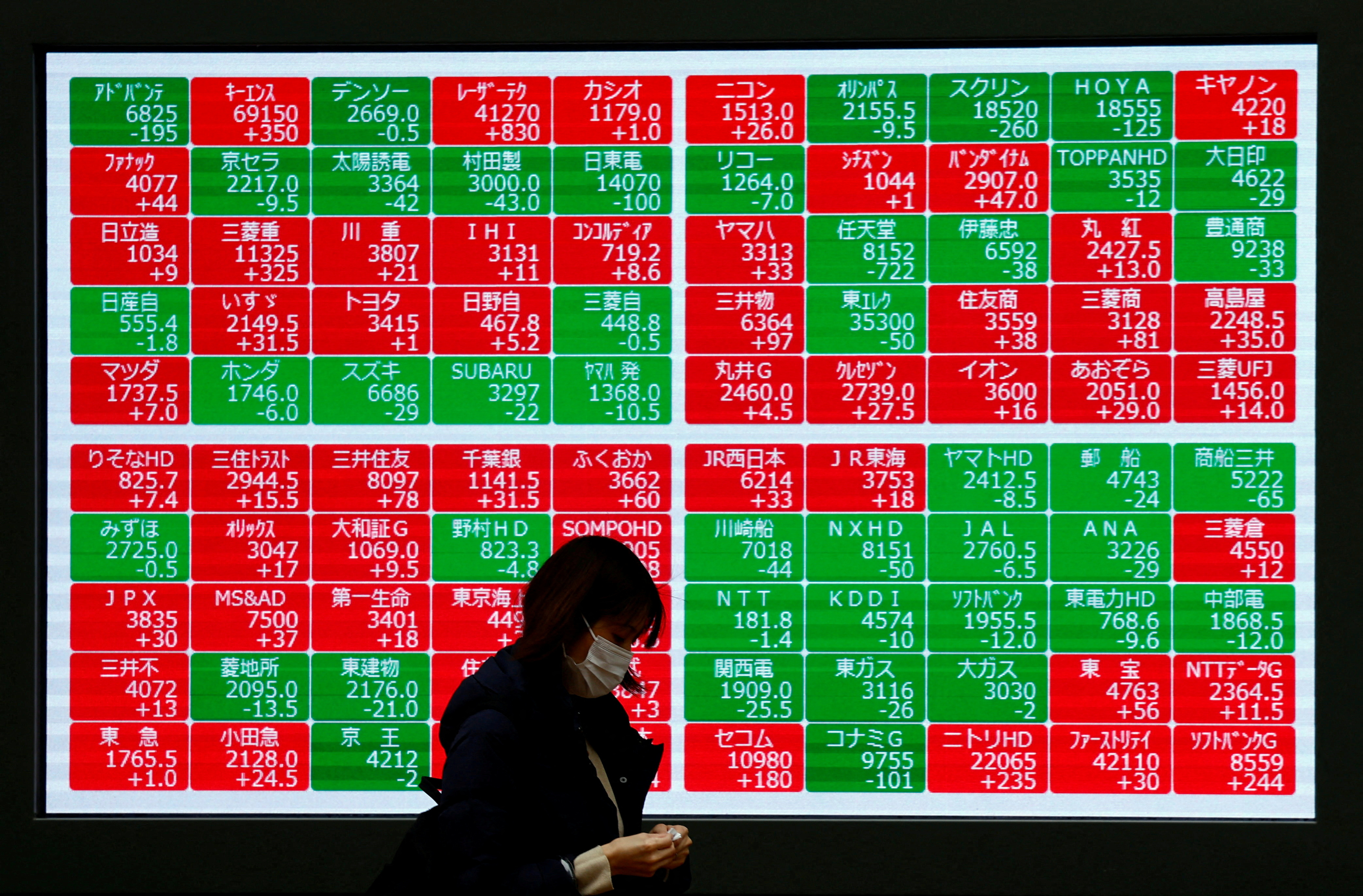
Report on the Overhaul of the United States Agency for International Development (USAID) and Its Impact on Sustainable Development Goals (SDGs)
Background and Context
In early February, the United States Agency for International Development (USAID) underwent a significant dismantling process. Aid workers and officials both in Washington and globally initiated efforts to salvage critical programs. This report highlights the implications of these changes, with a particular emphasis on how they affect the United Nations Sustainable Development Goals (SDGs).
Efforts to Retain Critical USAID Programs
Following the dismantling, there was a covert yet widespread effort to preserve key USAID projects, including those aligned with the administration’s priorities. Notable interventions included:
- Former President George W. Bush contacting Secretary of State Marco Rubio to advocate for the PEPFAR program (SDG 3: Good Health and Well-being).
- The World Food Program alerting senators and ambassadors about the risk of millions of deaths due to hunger (SDG 2: Zero Hunger).
- Aid workers identifying programs compatible with the “America First” agenda for potential reinstatement.
Remaining USAID Programs by Sector
| Sector | Remaining Programs | Value (in millions USD) | Relevant SDGs |
|---|---|---|---|
| All programs | 891 | $69,115 | All SDGs |
| Crisis relief | 528 | $9,457 | SDG 1: No Poverty, SDG 2: Zero Hunger |
| Malaria | 16 | $2,901 | SDG 3: Good Health and Well-being |
| H.I.V./AIDS | 99 | $23,954 | SDG 3: Good Health and Well-being |
| Tuberculosis | 16 | $400 | SDG 3: Good Health and Well-being |
| Emerging health threats | 10 | $948 | SDG 3: Good Health and Well-being |
| Disaster readiness | 52 | $868 | SDG 11: Sustainable Cities and Communities |
| Water supply and sanitation | 11 | $133 | SDG 6: Clean Water and Sanitation |
| Maternal and child health | 9 | $579 | SDG 3: Good Health and Well-being |
| Social protections | 5 | $56 | SDG 1: No Poverty, SDG 10: Reduced Inequalities |
Note: Sector data was unavailable for 15 awards worth $3 billion. Values represent obligations to date.
Challenges in the Overhaul Process
- The overhaul lacked a comprehensive review aligned with U.S. foreign policy and SDG priorities.
- Decisions were often made without a holistic perspective, ignoring program interdependencies critical for sustainable development.
- There was confusion among USAID employees and congressional overseers regarding the administration’s foreign aid objectives.
Focus of Remaining Funding and Implications for SDGs
The retained awards primarily address acute crises such as disease outbreaks and hunger emergencies, focusing on:
- Emergency health interventions (SDG 3: Good Health and Well-being)
- Food aid and disaster preparedness (SDG 2: Zero Hunger, SDG 11: Sustainable Cities and Communities)
However, programs targeting long-term development goals such as education, governance, and employment were largely cut, potentially undermining progress towards SDG 4 (Quality Education), SDG 8 (Decent Work and Economic Growth), and SDG 16 (Peace, Justice and Strong Institutions).
“It’s way cheaper to stabilize people so they can weather the storm than to wait until they are destitute and their kids are malnourished.” – Laura Meissner, former USAID contractor
Decision-Making Dynamics and Political Influence
Political and Administrative Actions
- Public calls by political figures and organizations to restore critical programs, especially those addressing hunger and health crises.
- Private meetings between aid organizations and agency managers to advocate for program reinstatement.
- Legal actions by aid organizations to challenge program cuts.
- Rapid restoration of over 300 awards following leaked memos highlighting potential millions of deaths and infections if programs remained terminated.
Program Restoration Timeline
Programs restored included:
- Emergency food aid sourced from U.S. agriculture (SDG 2: Zero Hunger)
- Disaster preparedness initiatives (SDG 11: Sustainable Cities and Communities)
- Health programs combating H.I.V./AIDS and malaria (SDG 3: Good Health and Well-being)
- Programs in Jordan and Cuba addressing local needs
Administrative Challenges and Conflicts
- Conflicting decisions between Secretary Rubio and the Department of Government Efficiency (DOGE) staff created uncertainty.
- Smaller, local organizations were disproportionately affected due to lack of advocacy in Washington.
- Concerns raised about the agency’s ability to manage remaining programs effectively due to staffing and resource constraints.
Financial Analysis and Prioritization
Funding Distribution and Cuts
- Approximately 83% of USAID programs were cut, but these represented less than half of the agency’s financial obligations.
- Large-value awards, often exceeding $6 million, were retained, focusing on major global health supply chains (SDG 3).
- Smaller awards, many under $1 million, were disproportionately terminated.
- Total canceled awards were valued at an estimated $76 billion over several years, with $47 billion already committed.
Implications for SDGs
The financial prioritization favored programs with immediate and large-scale impact on health and emergency relief, aligning with SDG 3 and SDG 2. However, the reduction in smaller-scale and long-term development projects risks undermining progress towards other SDGs, including:
- SDG 4: Quality Education
- SDG 5: Gender Equality
- SDG 8: Decent Work and Economic Growth
- SDG 10: Reduced Inequalities
- SDG 16: Peace, Justice and Strong Institutions
Strategic Outlook and Future Challenges
Transition and Integration
Plans are underway to integrate remaining USAID awards under the U.S. State Department’s management. This transition raises concerns about:
- Further budget cuts and program terminations.
- Insufficient staff, resources, and expertise to manage complex aid programs.
- Uncertainty affecting program planning and delivery, exemplified by food aid programs in Kenya facing critical shortages (SDG 2).
Long-Term Consequences
Experts warn that the dismantling and piecemeal restoration approach may lead to:
- Reduced U.S. influence in developing countries, potentially ceding ground to other global powers.
- Negative impacts on global health security and humanitarian outcomes.
- Challenges in achieving sustainable development and self-reliance in partner countries.
Conclusion
The overhaul of USAID has had profound effects on the agency’s capacity to contribute to the Sustainable Development Goals. While emergency and health-related programs aligned with SDG 2 and SDG 3 have been prioritized, the reduction in long-term development initiatives threatens broader SDG progress. Transparent, strategic planning and adequate resourcing are essential to ensure that U.S. foreign aid continues to support global sustainable development effectively.
Methodology
This report is based on 70 interviews, analysis of internal and public award databases, and review of internal documents and correspondence from USAID and the U.S. State Department. Data on award status and funding were compared from multiple sources including ForeignAssistance.gov and USASpending.gov. Financial values reflect obligations as of early 2025.
1. Sustainable Development Goals (SDGs) Addressed or Connected
- SDG 2: Zero Hunger – The article discusses emergency food aid programs, hunger crises, and the World Food Program’s efforts to feed refugees, highlighting the importance of food security.
- SDG 3: Good Health and Well-being – Multiple health-related programs are mentioned, including those targeting H.I.V./AIDS, malaria, tuberculosis, maternal and child health, and emerging health threats.
- SDG 6: Clean Water and Sanitation – Water supply and sanitation programs are listed among the remaining U.S.A.I.D. projects.
- SDG 1: No Poverty – Social protection programs and efforts to stabilize vulnerable populations are referenced, aiming to reduce poverty and vulnerability.
- SDG 13: Climate Action / Disaster Readiness – Disaster readiness programs are part of the remaining aid efforts, addressing resilience to climate-related and other disasters.
- SDG 16: Peace, Justice and Strong Institutions (implied) – The article references governance and oversight challenges, as well as issues with agency restructuring and political interference.
2. Specific Targets Under Those SDGs Identified
- SDG 2: Zero Hunger
- Target 2.1: End hunger and ensure access by all people to safe, nutritious and sufficient food all year round.
- Target 2.2: End all forms of malnutrition, including achieving targets on stunted and wasted children.
- SDG 3: Good Health and Well-being
- Target 3.3: End the epidemics of AIDS, tuberculosis, malaria, and neglected tropical diseases.
- Target 3.8: Achieve universal health coverage, including access to quality essential health-care services.
- Target 3.d: Strengthen the capacity for early warning, risk reduction and management of health risks (emerging health threats).
- Target 3.1 and 3.2: Reduce maternal mortality and end preventable deaths of newborns and children under 5 years of age.
- SDG 6: Clean Water and Sanitation
- Target 6.1: Achieve universal and equitable access to safe and affordable drinking water.
- Target 6.2: Achieve access to adequate and equitable sanitation and hygiene.
- SDG 1: No Poverty
- Target 1.3: Implement nationally appropriate social protection systems and measures for all.
- SDG 13: Climate Action / Disaster Readiness
- Target 13.1: Strengthen resilience and adaptive capacity to climate-related hazards and natural disasters.
- SDG 16: Peace, Justice and Strong Institutions (implied)
- Target 16.6: Develop effective, accountable and transparent institutions at all levels.
- Target 16.7: Ensure responsive, inclusive, participatory and representative decision-making.
3. Indicators Mentioned or Implied to Measure Progress
- Health Indicators
- Number of people receiving treatment or prevention for H.I.V./AIDS, malaria, and tuberculosis (implied by program focus and funding amounts).
- Maternal and child mortality rates (implied through maternal and child health programs).
- Incidence and prevalence rates of targeted diseases (H.I.V./AIDS, malaria, tuberculosis).
- Coverage of emerging health threat preparedness and response programs.
- Food Security Indicators
- Number of people receiving emergency food aid (e.g., 700,000 refugees fed in Kenya).
- Levels of malnutrition and food insecurity in targeted populations.
- Water and Sanitation Indicators
- Access to safe drinking water and sanitation facilities among beneficiary populations.
- Social Protection Indicators
- Coverage and effectiveness of social protection programs.
- Disaster Readiness Indicators
- Number of disaster preparedness programs active and their coverage.
- Response times and effectiveness in disaster situations.
- Program Funding and Award Status
- Number and value of active, cut, and restored programs (e.g., 891 remaining programs worth $69,115 million).
- Share of funding allocated to critical sectors (health, crisis relief, food aid).
- Progress in restoring programs after cuts (timeline of restorations).
- Governance and Oversight Indicators (implied)
- Effectiveness of agency oversight and program management.
- Transparency and accountability measures within U.S.A.I.D. and related departments.
4. Table: SDGs, Targets and Indicators
| SDGs | Targets | Indicators |
|---|---|---|
| SDG 2: Zero Hunger |
|
|
| SDG 3: Good Health and Well-being |
|
|
| SDG 6: Clean Water and Sanitation |
|
|
| SDG 1: No Poverty |
|
|
| SDG 13: Climate Action / Disaster Readiness |
|
|
| SDG 16: Peace, Justice and Strong Institutions (implied) |
|
|
Source: nytimes.com







